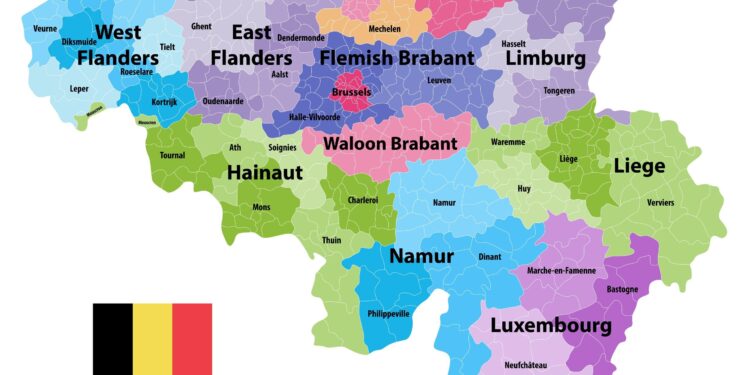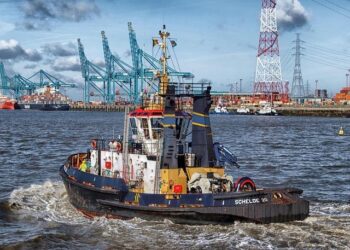Belgium’s economy maintained steady growth in the second quarter, with GDP figures confirmed at a modest 0.2%, according to the latest data released on TradingView. The report highlights the country’s continued economic resilience amid a challenging global environment, reflecting cautious optimism among investors and policymakers. This latest update offers important insights into Belgium’s economic trajectory as it navigates inflationary pressures and supply chain disruptions.
Belgium Q2 GDP Growth Solidifies Economic Stability
Belgium’s economy demonstrated resilience in the second quarter as GDP expanded by 0.2%, reinforcing a trend of steady recovery amidst global uncertainties. This modest yet consistent growth reflects the strength of key sectors such as manufacturing and services, which continue to drive domestic demand and stabilize export performance despite ongoing supply chain challenges. Analysts highlight that prudent fiscal policies and targeted investments have played a crucial role in maintaining the country’s economic momentum.
The breakdown of quarterly growth reveals a balanced contribution across industries, underscoring diversified economic drivers. Below is a summary of sectoral growth rates contributing to the overall GDP figure:
| Sector | Q2 Growth Rate |
|---|---|
| Manufacturing | +0.4% |
| Services | +0.3% |
| Construction | 0.0% |
| Agriculture | -0.1% |
- Robust consumer spending helped buffer external pressures.
- Exports showed signs of gradual improvement, supported by the eurozone’s recovery.
- Investment inflows reflected growing confidence in Belgium’s economic policies.
Key Factors Driving Belgium’s Modest Economic Expansion
Belgium’s economic expansion has continued at a modest pace in Q2, largely supported by stable domestic consumption and a resilient labor market. Consumer spending remained a key pillar, bolstered by sustained wage growth and improved consumer confidence despite global uncertainties. Additionally, the services sector, particularly professional and technical services, showed steady demand, reflecting ongoing investments in digital transformation and business services. However, inflationary pressures and supply chain disruptions tempered more robust growth, limiting broader economic acceleration.
On the external front, Belgium’s export performance exhibited cautious optimism amid fluctuating global trade conditions. Exports of chemicals and pharmaceuticals remained strong, underpinned by steady demand from European partners. Meanwhile, manufacturing output saw mixed results, with automotive and machinery sectors facing headwinds due to semiconductor shortages and logistical challenges. The table below highlights some key quarterly changes contributing to the overall 0.2% GDP growth:
| Sector | Q2 Growth (%) | Key Drivers |
|---|---|---|
| Consumer Services | +0.4 | Stable spending, wage growth |
| Manufacturing | +0.1 | Mixed output, supply constraints |
| Exports | +0.3 | Chemicals, pharmaceuticals demand |
| Construction | 0.0 | Flat due to materials cost |
Investment Strategies to Leverage Belgium’s Steady Growth Outlook
Investors aiming to capitalize on Belgium’s confirmed Q2 GDP growth of 0.2% should consider a diversified approach that balances stability with targeted sectoral opportunities. Key areas showing resilience include the technology and healthcare sectors, benefiting from ongoing innovation and demographic trends. Allocating assets into blue-chip Belgian companies and exchange-traded funds (ETFs) focused on these industries can provide solid returns aligned with the country’s steady economic expansion.
Additionally, exposure to sustainable energy and infrastructure projects presents a strategic edge amid increasing government commitments to green initiatives. A well-rounded portfolio might incorporate:
- Renewable energy stocks: Wind and solar firms advancing Belgium’s energy transition
- Real estate investment trusts (REITs): Focused on urban development benefiting from rising domestic consumption
- Fixed income instruments: Belgian sovereign bonds offering stability amid low interest rates
| Asset Class | Expected Performance | Risk Level |
|---|---|---|
| Technology Stocks | Moderate to High | Medium |
| Renewable Energy | High | Medium-High |
| Belgian Sovereign Bonds | Low to Moderate | Low |
| Real Estate | Moderate | Medium |
Key Takeaways
In conclusion, Belgium’s confirmed Q2 GDP growth of 0.2% reflects a modest yet steady economic expansion amid ongoing global uncertainties. Market watchers and policymakers will continue to monitor these developments closely as the country navigates inflationary pressures and supply chain challenges. TradingView users and investors alike can expect further analysis as more data emerges, providing deeper insights into Belgium’s economic trajectory in the months ahead.
















